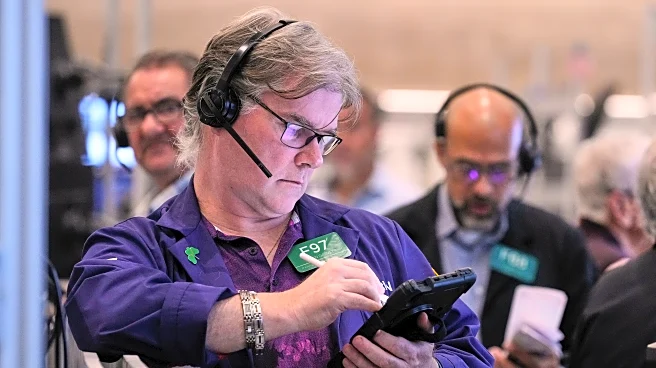What's Happening?
Quantum computing stocks experienced a significant surge following reports that the Trump administration might take equity stakes in several firms. This speculation led to increased trading activity, with
shares of companies like IonQ, Rigetti Computing, D-Wave Quantum, and Quantum Computing Inc. posting major gains. However, the Commerce Department quickly denied any active negotiations, adding uncertainty to the situation. Despite the denial, the possibility of government backing in the quantum computing sector has fueled investor optimism. The rally was further supported by JPMorgan's announcement of a $1.5 trillion Security and Resiliency Initiative, which includes funding for frontier technologies like quantum computing.
Why It's Important?
The potential involvement of the U.S. government in the quantum computing sector highlights the strategic importance of this technology. Quantum computing is seen as a key area for technological advancement, with significant implications for national security and economic competitiveness. The surge in stock prices reflects investor confidence in the sector's growth potential, driven by both private and public interest. However, the rapid increase in valuations has raised concerns about a possible bubble, as insiders have sold large amounts of shares amid the rally. The situation presents a complex scenario for investors, balancing long-term promise against short-term risks.
Beyond the Headlines
The developments in the quantum computing sector raise questions about the sustainability of current valuations. While technological breakthroughs from companies like Google and IonQ demonstrate progress, the high valuations compared to actual revenue suggest speculative trading. The comparison to the early 2000s internet boom indicates potential volatility in the market. Investors must consider the ethical and financial implications of investing in a sector with such rapid growth and insider selling. The long-term impact of quantum computing on industries and society remains significant, but the path to commercialization and profitability is still uncertain.













